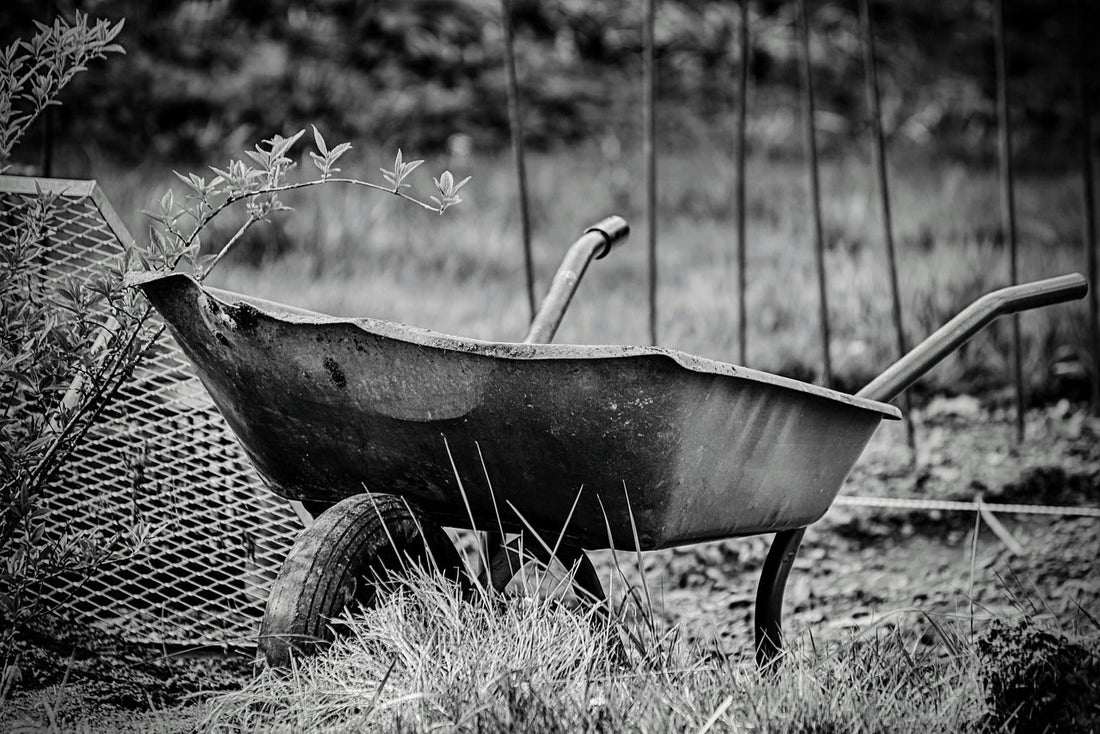
IN THE SPOTLIGHT... heirloom varieties...
Hilary ClementsShare
What Are Heirloom Seeds?
So this question throws up the fact that there isn’t a consensus… some say a seed variety is an heirloom if it existed more than 50 years ago, but other experts only classify seeds cultivated before World War II. Either way that is a long time – and these varieties have lasted in that way because they have unique and special characteristics that people want. There isn’t a consensus over the name either: heirloom or heritage? Well in terms of seeds this is the same, but heirloom is more widely used & that’s what we use too.
Heirlooms Are Time-Tested: I often find myself writing “this variety has stood the test of time”, popularity may wax or wane but there are some varieties that are still desired. And it is all down to dedicated gardeners who have passed down favourite varieties in their families for generations. If these people took care to save these seeds from year to year and generation to generation then you know that there is something very special about it – perhaps the flavour, perhaps the reliability, perhaps the harvest, possibly its beauty, maybe the hardiness: I believe it comes down to the flavour above all the rest.
You Can Keep Saving Heirloom Seeds Each Year: in principle this is true. Heirlooms are open pollinated - whether by insects, the wind, or birds it is a matter of nature taking its course. If that pollen came from other flowers of the same variety (or were self pollinated) the plants that you then grow will maintain the genetic identity and have the same characteristics – flavour, colour, growth, habit and so on. This is a stable variety – what you see is what you get year on year. Because of this These varieties are often well adapted to their local environment or climate area. They display good growing characteristics and almost always have stand out flavour.
Why is flavour such a key aspect of heirloom varieties? Well think about it. Why would you keep growing a plant that tasted horrible when the whole point of growing from ancient times was to feed people be it a family, a village or a larger population. Why take the time to save seeds to grow again in subsequent years. There must be a reason why particular varieties were important enough to save seed. They had a value or values that were desired – they tasted good, they grew well, they were reliable, the crop was worth the effort. After those values would come versatility (where & when it could be grown and how it could be eaten), storage value and yield, and finally looks – in food survival terms aesthetics is always at the bottom of the list.
This is not to say that there hasn’t been plant ‘development’ over time. Selecting seed from a particular plant that seems to be more productive can result in a strain that is particularly productive but essentially has the same genetic identity. Just as selecting seed from a particularly tasty plant can bring taste to the forefront. It doesn’t necessarily follow that you get both the flavour & the productivity
This is very different to a hybrid (the F1 varieties) which need to have cross pollination between 2 established varieties to produce a specific outcome – without this controlled pollination the subsequent generations of plants are not stable and will revert to the dominant parent’s characteristics… F1 development was driven by the push to boost crop yields during and after WW2. The characteristics they were looking for were increased yield, followed by predictable cropping time.
Of course these are very good reasons for growing F1 choices in your garden but heirlooms should not be overlooked.
Are Heirlooms Harder to Grow? I don’t think so. Heirlooms are not bred to be disease resistant like many modern hybrids but they are still around and being grown because of those characteristics I mentioned before: often well adapted to their local environment or climate area, they display good growing qualities and almost always have stand out flavour. They are an excellent choice for almost any garden.
Get the best from all your seeds: follow good gardening strategies and you will get the most out of all your seeds, including those heirloom choices.
- Preparation: starting with healthy soil: digging, weeding and from time to time think about incorporating a green manure.
- Enriching: giving it a boost with some nutritious quality compost (perhaps your homemade heap can help here).
- Air flow & space: it might feel a wate of space but some of those gaps between your plants allow air to circulate and reduce soggy wet leaves being in contact with each other or the soil. It also allows you to water close to the roots (or use a drip system) which helps roots to grow and develop leading to stronger plants.
- Keep your plot tidy: all year round keep an eye out & remove plant debris and plants that are looking unwell – this helps minimise the spread of blight and other potential problems
- Mixing and rotating: different plants use different nutrients which is the principle behind crop rotation. The also can attract different pests! Changing where you grow particular crops from year to year helps with both the nutrient uptake and helps to stop pests building up. Alternating rows of crops and utilising beneficial insects is helpful for your veggies and the wildlife – think nasturtiums near beans as an example
- Expect some unexpected outcomes: open pollinated plants by their very nature can throw up an unexpected result – a different coloured fruit is the most common – and these are the ones that in the past the seed wouldn’t be saved from!
Currently over a tenth or our range are heirloom varieties, you can see all of these by viewing the Heirloom Collection
Heirlooms for February sowing include Artichoke Green Globe, Asparagus Connover's Colossal, Baby Leaf Red Ruble (Kale), Beetroots Detroit Globe & Lutz, Cabbage Greyhound, Celeriac Giant Prague, Chilli Padron, Corn Salads Grote Noord Hollandse & Verte De Cambrai, Endive Cornet De Bordeaux, Leaf Beet Perpetual Spinach, Leek Hannibal, Lettuces Barba Dei Frati, Black Seeded Simpson, Freckles & Red Grenoble. Onions Ailsa Craig, Borettana & Shallot Zebrune. Radishes Cherry Belle, Malaga Violet & Watermelon. Spring Onion White Lisbon, Tomato Black Cherry, Broad Beans Aquadulce Claudia, Crimson Flowered & Sutton Dwarf & finally Petit-Pois Petite Provencal. Yummy, yummy yummy!
